Features
The Spirit of ‘Final Fantasy Tactics Advance’ Lives On In Canadian-Developed ‘Children of Zodiarcs’
My tank is surrounded.
Two knights flank him, and a spellcaster is perched on a nearby roof. I play out the next few turns in my head. Based on possible enemy attacks with this specific arrangement of hostile units, I assess the risks behind staying in place. A sniper is close; they’ll have my tank in their sights after the next turn.
I settle on using my tank as bait to keep enemy placement concentrated. Instead of running, he’ll buff himself, top off his health, and hunker down.
Now to calculate damage. My rogue can stealth in closer. Ideally the tank will hold their attention. But, in the likely scenario that the one knight my rogue is in range of decides to attack her, she can shrug it off.
My mage, on the other hand is a glass cannon. She plays a dangerous balancing act of dealing out high bursts of damage and trying to not get knocked out in two hits. This is a setup turn for her; get her in closer, but out of range, and prep ahead. Or should I risk it and try and get in range to debuff the enemies? Could the tank block movement well enough where she isn’t at risk? Will that help the tank survive?
Thirty minutes and dozens of imagined scenarios later, I end my turn. My plan unfolds over the next few turns in a glorious symphony of prediction, combos, and a smattering of luck. Ten-year-old me grins ecstatically.
A frazzled 10 year old boy explains his video game strategy, ca. 2003
For a child like myself who was either frequently on the move or busy coming up with different ways to sprawl himself along the length of the couch, the Gameboy Advance existed as an extension of my body. My library consisted of staples like Mario, Zelda, and even more esoteric ones like Boktai. But as time went on, only Square Enix’s Final Fantasy Tactics Advance had the staying power and replayability to consistently find itself in my GBA.
Gorgeous painted aesthetic, ornate armor, and ridiculous hair. Yep, this is a Square game.
FFTA was my gateway into the wonderfully frustrating world of SRPGs and Tactics games. Shining Force, Fire Emblem, and Western titles like XCOM scratch this itch of chess-like strategizing blended with video game mechanics like items, skills, and leveling up. Tactics and SRPG games tend to be turn-based and utilize a grid/hex-based movement system with specialized units or classes that can move and act in discrete increments. Combat takes place on maps where the objective (or one of them) is usually to eliminate the enemy units. The genre focuses on strategy and planning ahead, so players spending inordinate amounts of time mulling over every possible situation is a common occurrence (as is the player turning into a frothing, raving mess when they see their plan fall apart during the enemy’s turn).
This makes sense in context, I swear.
FFTA is by no means the best or most nuanced the SRPG genre has to offer. Its predecessor, Final Fantasy Tactics for the PS1, can claim greater depth, customization, and arguably a more fleshed out narrative. Disgaea, pictured above, is notorious for its complex gameplay. But it is precisely because FFTA was a more streamlined experience that it continues to hold a special place in my heart.
There is something to be said for stylized simplicity, a design notion that functions as a unifying thread tying together all aspects of FFTA. The story is a charming fantasy adventure, the mechanics are straightforward but deep enough to offer a hefty amount of strategy and replayability, and the pixel sprites, isometric environments, and GBA soundfont mix together in a gorgeously simplistic blend.
Simple and clean.
So where did the genre go from there? There were other SRPGs along the way, like Luminous Arc, Disgaea, and Stella Glow but they were all more or less repeats of the same formula. Western devs would carve out their own niche with games like XCOM and Banner Saga, but it was in 2016 a certain Kickstarter campaign caught my eye. It touted itself as a game that aspired to follow in the footsteps of well established Japanese Tactics games. The devs drew distinct lines to beloved titles that many gamers have clear thoughts and opinions about. I was intrigued enough to back the project and the very next year Children of Zodiarcs released to the world at large.
There are a lot of Kickstarter horror stories out there. Thankfully, Children of Zodiarcs is not one of them.
CoZ, developed by Montreal-based team ‘Cardboard Utopia’, does exactly what it advertised: offers a game inspired by Japanese Tactics and SRPG classics. To what effect is up for debate, but what is interesting is how it approaches this concept of player agency and how it does so differently from the games it draws inspiration from. CoZ is a unique blend of Japanese gameplay retooled with Western sensibilities.
SRPGs: now with 30% less numbers!
Before we delve in further, it is important to establish what exactly I mean by “player agency”. It is this idea of how much control player has over the flow of the game and, to an extent, its narrative. In a game like Fallout or Mass Effect, the player has the freedom to make choices and they must deal with the consequences, good or bad. This can manifest in a number of different ways, from picking a hostile dialogue option with an NPC to specializing a character’s skills and abilities.
Player agency is an incredibly important aspect of good game design. Think about some of your favorite games. How did they allow you to make choices? Were they small choices like how your character moved or large ones like choosing factions to align with? Chances are, your favorite games gave you the opportunity to directly influence the world and how you engage with it, with the game responding in turn.
Imperial tax septims at work.
Final Fantasy Tactics Advance offers player agency by creating freedom of choice in a multitude of different aspects, ranging from job/class development, item builds, missions, and even placing narrative landmarks. It does a wonderful job of giving the player a wide variety of small choices that add up to a surprisingly personal experience.
While the game does have a central narrative and cast, the bulk of the player’s fighting units will be random recruits with equally random names. By giving the player free reign over their classes, skills, items, and how they fit into the team, a personalized narrative forms organically. These recruits are far more than gussied up Mad-Libs. They live and die in battle. They score crits and misses. They clinch victories or sometimes bring you defeat. They’re your guildmates. Your comrades. Your friends.
Clan Nutsy rules, Clan Borzoi drools.
Children of Zodiarcs reworks the concept of player agency to create a more visceral immersion, as opposed to a narrative one. I had an interesting conversation at PAX with Jason Kim, the Creative Director for CoZ. He described how one of the team’s key design philosophies was capturing the highs and lows of playing a board game. CoZ replicates, to surprising effect, the feeling of immeasurable dread growing into glorious triumph (and vice-versa).
Pray to the gods of RNG.
I did some research on board games in Japan and curiously came up short. Unlike the West, which is experiencing a tabletop renaissance, Japan’s board game scene is limited. The benefit the developers of Children of Zodiarcs had in their design process was access to a culture heavily entrenched in this unique notion of experimenting with mechanics and rules. Nowhere is this more apparent than in tabletop games.
Board games have come a long way from Monopoly and Battleship. Games like Settlers of Catan and Pandemic herald a new generation of tabletop gaming where depth, experimentation, and innovation are the norm. Replayability and customization typically come into play through decks of cards and sets of dice; these game pieces can dictate units, abilities, or any number of game mechanics. The luck of the draw or roll can greatly affect future decisions, so strategic planning will usually involve mitigating randomness (RNG). Manipulating risk mitigation and RNG is equal parts tactical foresight and dangerous gambling. It is a core tenet of tabletop games that allows for intense gameplay experiences across a wide range of situations.
My friend, Michael, carefully considers his increasingly limited options (spoilers: I won).
Where FFTA allowed for comparatively deep customization, CoZ only gives the player two avenues for customization: the aforementioned dice and cards. Customization, while present, is not nearly as fleshed out as in other titles within the SRPG genre. The game limits the roster to a select group of individuals, and stats are practically non-existent in the game. There are no talents, classes, or passive skills. It’s as if someone took FFTA, an already streamlined SRPG, and streamlined it further.
On the flipside, what CoZ does brilliantly is replicating the feel and excitement of playing a board game. You have some leeway in choosing deck composition and crafting sides for your dice, two mechanics that play into this idea of mitigating risk and RNG. There’s something deeply satisfying about drawing a series of cards and rolling through a combo or hearing the clack of the dice as a wonderful mix of symbols signify that you are about to absolutely destroy your enemy, especially when it was the result of strategic foresight and planning. The elation in drawing a high-damage ability in the exact situation you need it or the seething rage from a stray die messing up your perfect roll are sentiments that CoZ expertly draws from tabletop gaming.
Not pictured: the player fist pumping.
This is what I mean when I refer to Children of Zodiarcs shifting the player agency from narrative immersion to visceral immersion. Your decisions in-combat as the player consist of choosing which dice and cards to use and which two dice from any given roll you’d like to reroll. That’s it. By placing greater emphasis on how the player engages with the game, the CoZ devs succeed at capturing the emotional highs and lows that tabletop gaming offers. The genius at work here is the depth and time you can still spend parsing out the optimal strategies for you to take. Deck composition and dice crafting are relatively small adjustments that can greatly affect the likelihood of what you draw or roll. Risk and RNG mitigation is a simple game design concept that allows for a surprising amount of depth. Not to say that a game like FFTA didn’t have this, far from it. What I’m instead suggesting is that by presenting the player with a modular set of limited tools, their sense of play, strategy, and imagination are given free reign within relatively simple confines.
This is one sub-menu for one character in FFTA…
…and this is your whole party in CoZ. The menu doesn’t get much more in-depth than this, even after you progress.
To offer a similar analogy, compare and contrast the experiences of playing Hearthstone vs. playing Magic: The Gathering. MTG features a deep, faction-based library of cards that can result in exceedingly hefty and intricate decks and combos. Meanwhile, Hearthstone offers a streamlined collectible card game experience with fewer moving parts and more limits. By allowing the player to focus on fewer things, they can more quickly jump into a game and experience “Fun”.
The concept of “Fun” is an amorphous one, for which there is no right or wrong answer. “Fun” in a lot of these older Japanese SRPGs (and JRPGs to a greater extent) involves heavy micromanagement. Like playing MTG, there is most definitely fun to be found in these robust and complex game systems. But what Cardboard Utopia sought to accomplish in Children of Zodiarcs was to achieve this sense of fun that didn’t require excessive amounts of effort, while still capturing a sense of strategy and planning.
Do I wish I could see statistics and have greater control on the numbers? Sure. Is that what CoZ aims to do? Not at all. And that’s okay. I used the phrase “stylized simplicity” to describe FFTA in relation to its predecessor, Final Fantasy Tactics, and I’ll use it again to describe CoZ as it relates to FFTA.
“Arcadey” and “simple” are terms that may seem negative at first, but really all they are are different words to describe “fun”.
Edit: Because I was a dingus and forgot to post relevant links, here are relevant links.

-

 Features4 weeks ago
Features4 weeks agoDon’t Watch These 5 Fantasy Anime… Unless You Want to Be Obsessed
-

 Culture4 weeks ago
Culture4 weeks agoMultiplayer Online Gaming Communities Connect Players Across International Borders
-

 Features4 weeks ago
Features4 weeks ago“Even if it’s used a little, it’s fine”: Demon Slayer Star Shrugs Off AI Threat
-

 Features2 weeks ago
Features2 weeks agoBest Cross-Platform Games for PC, PS5, Xbox, and Switch
-

 Game Reviews4 weeks ago
Game Reviews4 weeks agoHow Overcooked! 2 Made Ruining Friendships Fun
-
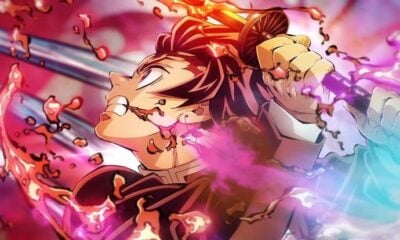
 Features2 weeks ago
Features2 weeks agoThe End Is Near! Demon Slayer’s Final Arc Trailer Hints at a Battle of Legends
-

 Features3 weeks ago
Features3 weeks ago8 Video Games That Gradually Get Harder
-
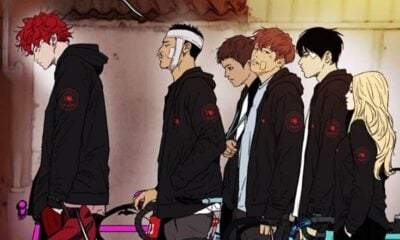
 Features1 day ago
Features1 day agoPopular Webtoon Wind Breaker Accused of Plagiarism, Fans Can’t Believe It!
-
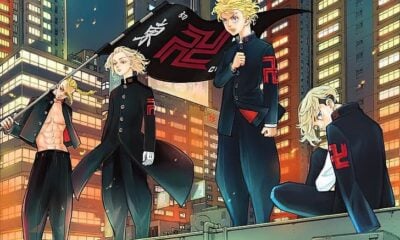
 Features3 weeks ago
Features3 weeks agoDon’t Miss This: Tokyo Revengers’ ‘Three Titans’ Arc Is What Fans Have Waited For!
-
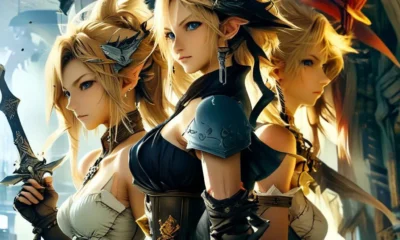
 Game Reviews2 weeks ago
Game Reviews2 weeks agoFinal Fantasy VII Rebirth Review: A Worthy Successor?
-

 Game Reviews4 weeks ago
Game Reviews4 weeks agoHow Persona 5 Royal Critiques the Cult of Success
-
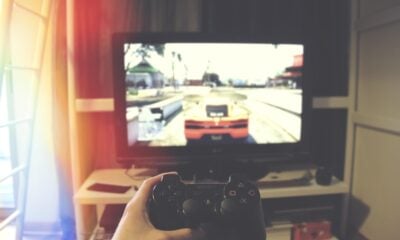
 Guides3 weeks ago
Guides3 weeks agoHow to buy games on Steam without a credit card























